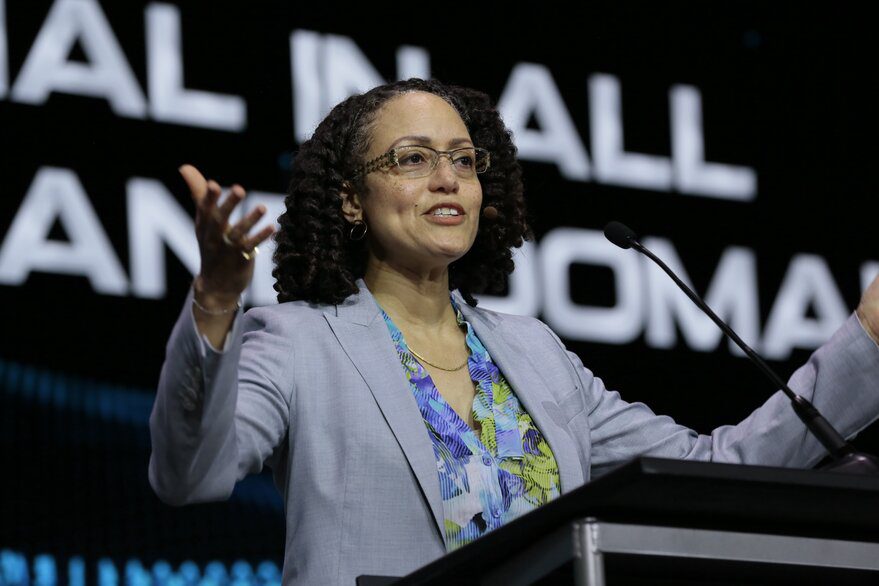ORLANDO, Fla. – As American intelligence agencies rely more on commercial geospatial products and services, they are becoming more concerned about cybersecurity.
“We produce many innovative solutions in this country,” said Stacey Dixon, the U.S. deputy director of national intelligence, at the 2024 GEOINT Symposium in Orlando on May 6. “However, we lose a lot of that innovation to adversaries because we don’t adequately protect it. Invest in your cybersecurity. Understand that people will attempt to steal your secrets.”
Potential adversaries will try to access commercial products directly as well as through intermediaries.
Find ways to prevent this, “because we don’t want our American-made or western-made products to fall into the hands of adversaries who will use them against us, our troops, or our interests,” Dixon said. “Please take the time to invest and know who is buying those capabilities.”
Artificial Intelligence
Information security is crucial as government agencies begin to use artificial intelligence to help combine various datasets.
“If we have algorithms that can access datasets held in different organizations and agencies and run all that data simultaneously, it will be more effective and provide different insights than if you do these things separately and then combine them later,” Dixon said.
Developing those algorithms will be a challenge. Furthermore, U.S. intelligence agencies looking to combine datasets with those of other agencies may need to adopt new policies. Legislation may also be necessary.
“We were formed as a community with specific agencies and disciplines,” Dixon said.
Laws specify the type of data each agency obtains.
“We’re going to have to find ways to navigate this while still protecting the American public and enabling more people to access the data,” Dixon said.
Verify and Validate
Before intelligence agencies can rely on algorithms and automation, they will need to understand how machines are generating the information, Dixon said. For large-language models, for example, “let’s be able to trace it back. That is possible.”
Amid increasing misinformation and disinformation campaigns, training analysts to verify and validate information sources will also be essential, Dixon said.
Analysts developing forecasting tools, for example, will need to demonstrate the value of the tools.
The best way to test a forecasting tool “is for you to tell me something that’s going to happen in the future,” Dixon said. “Then let’s see if your prediction was accurate.”
When models prove themselves, analysts will embrace them because they will reduce the time analysts need to spend on mundane, repetitive tasks, Dixon said.
“It enables them to use their creative minds to enhance what the machines are telling them,” she added.









